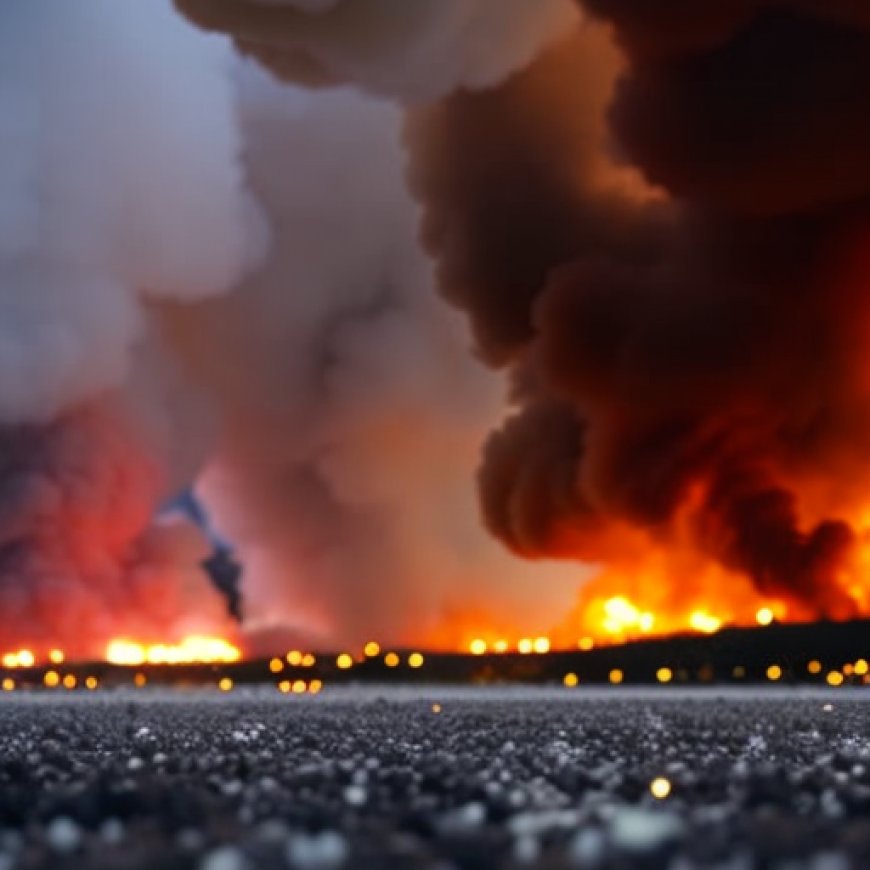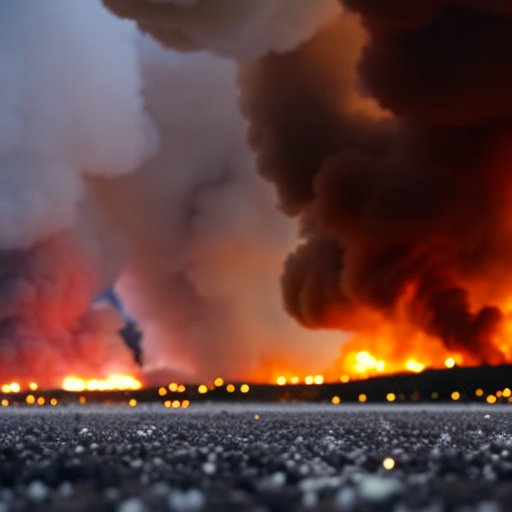Despite Fears to the Contrary, Canadian Wildfire Smoke Exposure Was Not Much Worse Than a Bad Pollen Day in New York City
Despite Fears to the Contrary, Canadian Wildfire Smoke Exposure ... NYU Langone Health


New Yorkers Exposed to Canadian Wildfire Smoke Experience Minimal Health Effects

Researchers from NYU Grossman School of Medicine have found that New Yorkers’ exposure to smoke from Canadian wildfires in June 2023 resulted in only a slight increase in visits to emergency departments for breathing problems or asthma attacks, comparable to the effects of high pollen counts. However, the study highlights the need for further investigation into potential health effects such as heart attacks and stroke.
Assessing Air Pollution Levels and Health Impacts
The study analyzed daily levels of air pollution, specifically particulate matter 2.5 (PM 2.5), which can cause inflammation and respiratory and heart problems when lodged deep in the lungs. Researchers examined air pollution levels during the first six months of 2023, including the peak days of wildfire smoke in June.
Results showed that for every 10-microgram increase in PM 2.5 per cubic meter of air, there was a 3 percent average increase in asthma-related emergency visits to hospitals across New York City. On June 7, when wildfire smoke reached its peak with a PM 2.5 level of 146 micrograms per cubic meter of air, there were 335 asthma-related emergency visits citywide, compared to a daily average of 188 earlier in the year when there was no wildfire smoke.
Comparing the effects of wildfire smoke to high pollen days, the study found that the peak number of asthma-related emergencies caused by wildfire smoke was only slightly higher than those caused by tree pollen on April 26. On that day, tree pollen counts were above 1,500 per cubic meter of air, resulting in 302 asthma-related emergencies.
Although no deaths were reported due to the wildfire smoke in June, the study emphasizes that asthma remains a serious and potentially life-threatening lung disease.
Long-Term Consequences and Future Research
The study’s co-investigators, Wuyue Yu and David Luglio, acknowledge that the long-term consequences of exposure to wildfire smoke are still unknown. They plan to conduct further air monitoring and compare the health effects of wildfire smoke to particulate matter from fossil-fuel combustion, which is more hazardous.
Senior study investigator George D. Thurston, ScD, explains that while inhaling any particle-filled air is detrimental to lung health, wildfire smoke primarily consists of organic matter and lacks the toxic metals found in fossil-fuel emissions. These metals are known to cause oxidative stress in the body. The study found that wildfire smoke contained 64 percent more potassium, a key component of soil and foliage, compared to ambient air pollution. In contrast, it contained only 12 percent of the average levels of copper and 26 percent of the average levels of sulfur found in background air pollution, both of which contribute to oxidative stress when inhaled.
Implications and Funding
The study, funded by NYU Langone, utilized hospital patient data from the New York City Department of Health and Mental Hygiene. Pollution and pollen data were provided by the New York State Department of Environmental Conservation and collected by the research team.
Media Inquiries
Contact: David March
Phone: 212-404-3528
Email: David.March@NYULangone.org
SDGs, Targets, and Indicators
1. Which SDGs are addressed or connected to the issues highlighted in the article?
- SDG 3: Good Health and Well-being
- SDG 11: Sustainable Cities and Communities
- SDG 13: Climate Action
2. What specific targets under those SDGs can be identified based on the article’s content?
- SDG 3.9: By 2030, substantially reduce the number of deaths and illnesses from hazardous chemicals and air, water, and soil pollution and contamination.
- SDG 11.6: By 2030, reduce the adverse per capita environmental impact of cities, including by paying special attention to air quality and municipal and other waste management.
- SDG 13.1: Strengthen resilience and adaptive capacity to climate-related hazards and natural disasters in all countries.
3. Are there any indicators mentioned or implied in the article that can be used to measure progress towards the identified targets?
- Air pollution levels measured by particulate matter 2.5 (PM 2.5) per cubic meter of air.
- Number of asthma-related visits to emergency departments.
Table: SDGs, Targets, and Indicators
| SDGs | Targets | Indicators |
|---|---|---|
| SDG 3: Good Health and Well-being | SDG 3.9: By 2030, substantially reduce the number of deaths and illnesses from hazardous chemicals and air, water, and soil pollution and contamination. | – Air pollution levels measured by particulate matter 2.5 (PM 2.5) per cubic meter of air. – Number of asthma-related visits to emergency departments. |
| SDG 11: Sustainable Cities and Communities | SDG 11.6: By 2030, reduce the adverse per capita environmental impact of cities, including by paying special attention to air quality and municipal and other waste management. | – Air pollution levels measured by particulate matter 2.5 (PM 2.5) per cubic meter of air. – Number of asthma-related visits to emergency departments. |
| SDG 13: Climate Action | SDG 13.1: Strengthen resilience and adaptive capacity to climate-related hazards and natural disasters in all countries. | – Air pollution levels measured by particulate matter 2.5 (PM 2.5) per cubic meter of air. – Number of asthma-related visits to emergency departments. |
Behold! This splendid article springs forth from the wellspring of knowledge, shaped by a wondrous proprietary AI technology that delved into a vast ocean of data, illuminating the path towards the Sustainable Development Goals. Remember that all rights are reserved by SDG Investors LLC, empowering us to champion progress together.
Source: nyulangone.org

Join us, as fellow seekers of change, on a transformative journey at https://sdgtalks.ai/welcome, where you can become a member and actively contribute to shaping a brighter future.







